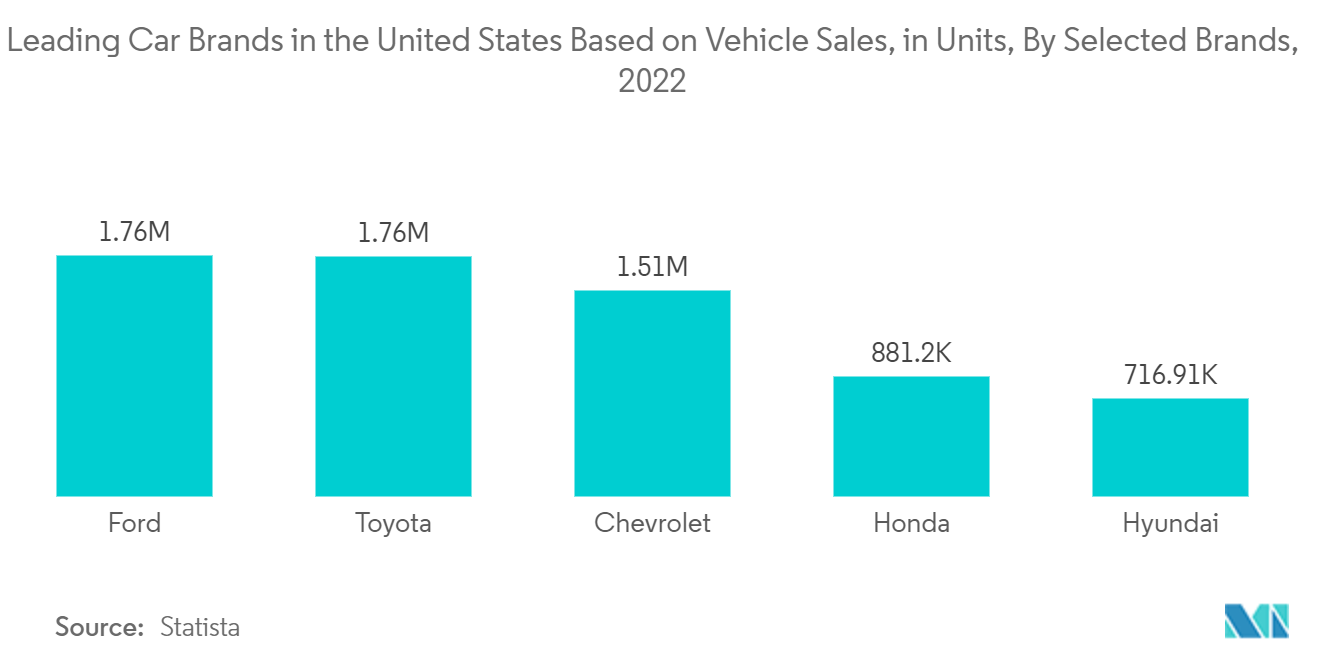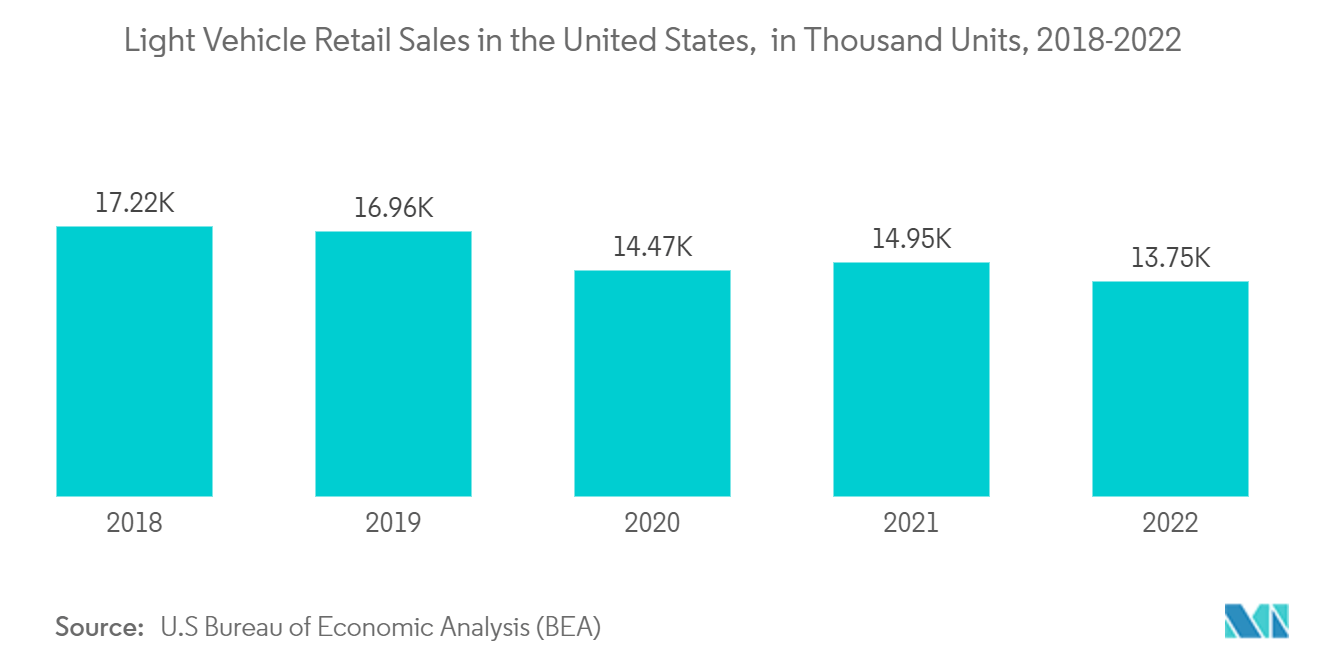Market Trends of North American Lightweight Car Industry
Composite Material Segment to gain Traction during the Forecast Period
As fuel costs and distance traveled are increasing, consumers want better miles per gallon (mpg) and often consider gas mileage as a key factor while purchasing a vehicle. With stringent emissions regulations due to increased exhaust emissions, automobile manufacturers are focusing on manufacturing lightweight vehicles to reduce CO2 emissions. A 10 kg weight reduction is estimated to save 1 gram of CO2 per kilometer. In the United States, the regulations mandate that, by 2025, the average fuel economy standard must meet 54.5 miles per gallon. As per the US Department of Energy (DOE), the vehicle's weight is being reduced by 10%, which may yield a 6-8% rise in fuel economy.
Thus, to facilitate this change, automobile manufacturers are shifting from steel or aluminum to composite materials essential to achieve the cost efficiency of these highly automated production cycles, which reduce vehicle weight. In a typical automobile, the use of fibers is 50% by volume while adding just 10% of the weight.
As a result, the companies have started using materials such as carbon fiber and titanium alloys to make vehicles lightweight and fuel-efficient, especially in luxury and sports models. Automotive manufacturers, such as Chevrolet, and Lamborghini, are some of the OEMs continually increasing the usage of composites in their vehicles as they aid in reducing the weight of the vehicles.
Furthermore, automotive manufacturers across the North American region such as Ford, Toyota, and Honda, among others are actively investing hefty sums to utilize composite materials for their vehicle components, which in turn, is positively impacting the composite segment of the market.
- In 2022, Ford, Toyota, Chevrolet, and Honda were the top four best-selling brands in the United States. Ford recorded sales of 1.76 million units in the United States in 2022, followed by Toyota with sales of 1.75 million units, and Chevrolet with a sales volume of 1.51 million units during the same period.
As more automakers shift towards the utilization of lightweight materials in their vehicles, the demand for the composite segment is expected to surge during the forecast period.

United States to Dominate the Lightweight Car Market during the Forecast Period
Strict regulations implemented by the government of the United States on emission standards and fuel consumption to curb greenhouse gas emissions are leading to a surging growth of the lightweight car market in the United States. The reduction in weight of the car substantially improves the fuel consumption ratio which in turn, assists in curbing emissions from cars.
- In July 2023, NHTSA proposed new Corporate Average Fuel Economy (CAFE) standards for passenger cars and light trucks built in model years 2027-2032. If finalized, the proposal would require an industry fleet-wide average of approximately 58 miles per gallon for passenger cars and light trucks in MY 2032, by increasing fuel economy by 2% year over year for passenger cars and by 4% year over year for light trucks.
Further, manufacturers are also working to reduce overall vehicle weight, which lowers the energy required to operate the vehicle and increases fuel economy. The Body-In-White system is the critical focal point for automakers looking for fuel savings because of its weight reduction potential, importance to crash safety, and impact on compounded weight reduction for other sub-systems, such as the powertrain.
- The light vehicle retail sales in the United States touched 13,754.3 thousand units in 2022 compared to 14,946.9 thousand units in 2021, representing a Y-o-Y decline of 7.9% between 2021 and 2022.
However, even in the United States, with the high cost of materials like carbon fiber and AHSS, and the ongoing research on the material mix, the growth of this industry hasn't reached its full potential. With the rapid enhancement in lightweight material technology and the increasing preference of consumers to avail of eco-friendly cars, the lightweight car market in the United States is expected to showcase surging growth during the forecast period.

